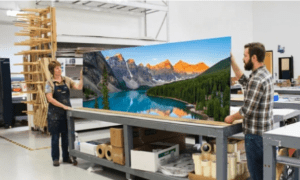Been in a car accident?
As police report over 6.2 million vehicle collisions annually in the United States understanding the collision repair process becomes essential for everyone. The global collision repair market is expanding rapidly and experts predict it will grow to US$ 246.2 billion by 2033 with an annual growth rate of 2.10%.
The essential steps you must follow to return your vehicle to the road safely and efficiently are outlined here.
What You’ll Discover Inside:
- The Fundamentals of Collision Repair
- Common Types of Repairs
- The Complete Repair Process
- Insurance and Cost Guidelines
- Choosing the Right Provider
- Quality Control Essentials
- Post-Repair Maintenance Tips
Understanding Modern Collision Repair
Selecting a leading collision repair provider knowledgeable about today’s advanced vehicle complexities becomes essential when your car requires post-accident repair services. They possess modern equipment and specialized knowledge which enables them to repair any damage ranging from minor dents to severe structural issues.
Why is this expertise so important? The increasing complexity of modern vehicles demands that repairs be carried out with specialized expertise and equipment. The growth of electric and hybrid vehicles requires repair technicians to undergo specialized training. Current statistics demonstrate that thousands of newly certified garages have gained the ability to work on high-voltage powertrains.
Today’s cars feature advanced safety systems and computer-controlled components with sensors that require flawless functionality after any repair work.
Common Types of Collision Repairs
Your ability to communicate with repair shops improves when you understand the different types of repairs. Here are the most common collision repairs:
Minor Dent Repair
Not all collision damage requires extensive work. For minor dents and dings:
Paintless dent repair techniques frequently serve as an appropriate solution for minor dents and dings.
- The process preserves your vehicle’s original finish
- Repairs are typically completed in 1-2 days
- Cost is usually lower than traditional repairs
Paint and Body Work
Professional bodywork and painting services are essential when your vehicle sustains exterior damage. This includes:
- Color matching using computerized systems
- Surface preparation and priming
- Professional paint application
- Clear coat protection
- Finish blending with existing paint
Structural Repairs
More serious collisions may require structural repairs. These are complex jobs that demand specialized equipment and expertise:
- Frame straightening
- Unibody repair
- Structural component replacement
- Welding and metal work
- Safety system recalibration
The Complete Repair Process
Initial Assessment and Documentation
A comprehensive evaluation serves as the essential first step in any collision repair process. The initial evaluation process goes beyond visible damage and requires understanding the complete impact of the collision.
Here’s what happens during the initial assessment:
- Visual inspection of all damaged areas
- Documentation of visible damage with photos
- Computer diagnostic scanning for internal issues
- Preliminary cost estimation
- Insurance documentation preparation
AI-powered damage assessment technology enables modern collision repair facilities to speed up the processing of claims and approvals. This technology guarantees that inspection processes capture all necessary details.
The Repair Journey
The knowledge of your vehicle repair process empowers you to make better decision choices. The collision repair process typically follows these steps:
- Disassembly and detailed inspection
- Frame and structural repair if needed
- Body panel repair or replacement
- Paint preparation and matching
- Refinishing and clear coat application
- Reassembly and parts replacement
- Quality control inspection
The market for spare parts represents 65% of all product types. Quality replacement parts play a crucial role throughout the collision repair process.
Insurance and Cost Considerations
We need to talk about the financial aspect which most probably concerns you. The collision repair market reached a value of $208.85 billion in 2024 because there are underlying factors contributing to these figures.
Today’s collision repair techniques extend beyond simple dent removal. They involve:
- Complex diagnostic procedures
- Specialized equipment usage
- OEM (Original Equipment Manufacturer) parts
- Skilled labor and expertise
- Advanced paint matching systems
The majority of the market is represented by OE (Original Equipment) sales channels which make up 56%. This demonstrates the crucial role of using correct parts for successful repairs.
Working with Insurance Companies
Most collision repairs involve insurance companies. Here’s how to navigate this process smoothly:
- Document everything thoroughly with photos
- Request your repair shop to provide you with a comprehensive cost estimate.
- Understand your insurance coverage
- Keep all communication records
- Ask questions about the repair process
The good news? Contemporary collision repair shops partner directly with insurance companies to expedite service delivery. It results in reduced stress for you and quicker approval processes.
Choosing the Right Service Provider
As Europe contributes 39% to the global collision repair market share we can deduce that worldwide quality standards are advancing. Which vehicle repair shop should you select for your vehicle’s repairs?
Here are the key factors to consider:
- Certification and training credentials
- Experience with your vehicle make and model
- Quality of equipment and facilities
- Customer reviews and reputation
- Warranty offerings
- Communication style and transparency
Understanding Repair Warranties
A reliable repair shop demonstrates their work quality through comprehensive warranty protection. Here’s what you should look for in a warranty:
- Written documentation of coverage terms
- Clear explanation of what’s covered
- Duration of the warranty
- Any conditions or limitations
- Transferability if you sell your vehicle
Quality Control and Final Inspection
Repair shops need to uphold strict quality control standards because light-duty vehicles account for 72% of the vehicle market by type. Final inspection plays a critical role in confirming that vehicle repairs result in a safe and correctly restored automobile.
A thorough quality control process includes:
- Comprehensive vehicle inspection
- Road testing when appropriate
- Paint finish verification
- Electronics systems testing
- Safety systems certification
Maintaining Your Vehicle After Repairs
Your repair work completes but additional steps follow the repair process. Here’s how to maintain your vehicle after collision repairs:
Regular Inspections
Schedule periodic inspections to ensure:
- Paint and finish are holding up
- No rust is developing around repair areas
- All systems are functioning properly
- Alignment remains correct
- No unexpected noises or vibrations
Documentation Matters
Keep detailed records of:
- All repair work performed
- Warranty information
- Follow-up inspections
- Any ongoing maintenance
- Insurance claim documentation
Professional Maintenance
Follow your vehicle manufacturer’s recommended maintenance schedule consistently. This includes:
- Regular oil changes
- Tire rotations
- Brake inspections
- System diagnostics
- Scheduled maintenance items
Keys to a Successful Repair
Quality remains the top priority for collision repair services. As modern vehicles grow more complex and the collision repair market approaches $216.41 billion by 2025 the importance of selecting the proper repair service grows.
Remember these essential points:
- Document everything thoroughly
- Choose a qualified repair provider
- Understand your insurance coverage
- Insist on quality parts and service
- Keep all repair records
Utilizing these guidelines while partnering with professional collision repair services will help you safely and effectively restore your vehicle to its original pre-accident state. The best way to safeguard your collision repair investment while preserving your vehicle’s value over time is through proper maintenance.



































